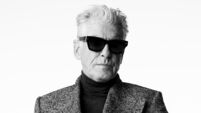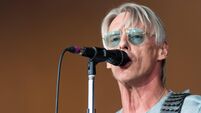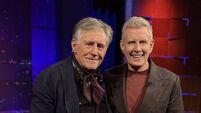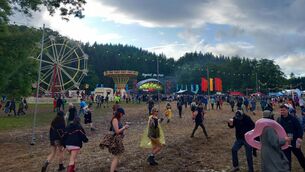Tom Dunne: Why 1972 was the key year for rock music in Ireland
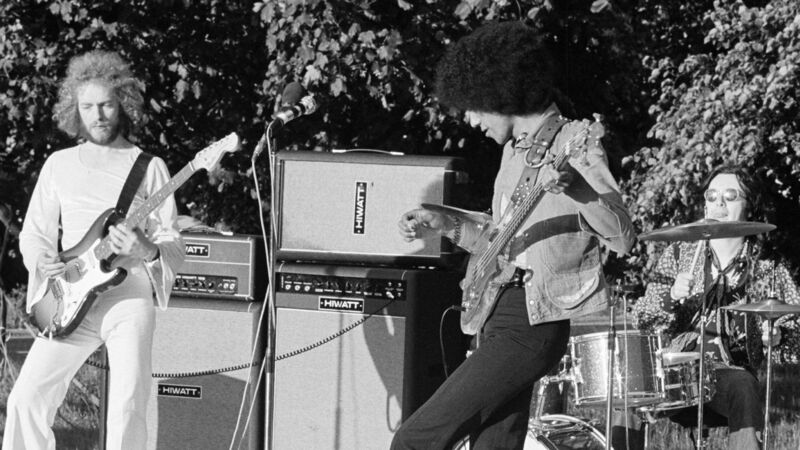
An early incarnation of Thin Lizzy perform on stage. Picture from RTÉ documentary How Ireland Rocked The 70s.
We get things later in Ireland. Punk hit the UK in 1976, but it was 1977/78 before it made any real inroads here. Studio 54 in NYC was already closed before we really embraced disco and, as for the ‘Swinging Sixties', well, history will show they barely made it here in time for Italia ’90.
Hence it should come as no surprise that 1971, the “year that changed everything”, according to author David Hepworth, didn’t really show its face here until 1972. That said, given the cultural chasm between the music scene of Laurel Canyon and that say of Rathmines, this is hardly surprising.
Ireland in 1972 was under the control of the showbands. There were as many as 700 of them, touring Ireland in vans and encouraging people to listen to music, have a laugh, chill out and maybe ‘get the shift'. They were like the Taliban, only the complete opposite.
With up to 7,000 people in their ranks they employed more people than Apple Cork, and they had ‘tech job’ employment conditions: There was a 24 hour dining area (the van), basic but comfortable sleeping quarters (the van); and great travel opportunities (the van). Plus, there were no people over a certain age.
Very few people escaped this world. The two most notable were Van Morrison – who had major success in the USA- and Rory Gallagher – who had great success in continental Europe. But their journeys home were fraught with tension, with showband ‘press gangs’ watching their every move.
Early January of 1971 saw the charts in Ireland topped by the misty eyed strains of I’d Like to Teach the World to Sing, but events closer to home some ended the optimism. These were dark days in Northern Ireland, reflected first in Barleycorn’s The Men Behind the Wire, and then, weirdly, in a chart-topping Give Ireland Back to the Irish, from Paul McCartney.
Elsewhere, the post-1971 music landscape was changing fast. As the Beatles fan club officially ended, Paul’s new band Wings were making their first concert appearance in Nottingham. Singer/song writers reigned supreme, with Nilsson’s Without You and Neil Young’s Heart of Gold spending weeks as US number ones.
In Ireland, though, the charts – although peppered with T Rex, Slade and Johnny Cash - were often the preserve of Big Tom and The Mainliners and Sandie, Joe and the Dixies.
Outside of Rory and Van, it was hard for rock to get a foothold. When Thin Lizzy released their second album, Shades of a Blue Orphanage, it tanked. When Horslips formed in March they were more Celtic than rock and, although their album Happy To Meet, Sorry to Part sold well, the big success was Gilbert O’Sullivan.
1971 had been good for Gilbert, but ’72 was unparalleled. Alone Again (Naturally) would spendsix weeks at the US number one spot with its US sales being topped only by Roberta Flack’s version of The First Time Ever I Saw Your face.
Hence his song Clair took the Irish number one slot for almost all of November. Ireland, it seemed, was not the place for rock and roll. And then a very strange thing happened.
The Christmas number one in Ireland for 1972 was Thin Lizzy’s version of Whiskey in the Jar. A star had appeared in the Christmas sky and its name was Phil Lynott. ‘Whiskey’ was the shot that was heard right across the land.
Its Irish success was followed by an entry in the UK top ten in February 1973, and a Top of the Pops appearance that introduced the wider world to the coolest bass player since Macca. Even the Christian Brothers advised us to, “watch Top of the Pops tonight”.
I suspect it inspired Horslips to be a little less Celtic and a little more rock for their next album, 1973’s The Tain. That produced another iconic Irish song in Dearg Doom, a German number one. To me, these two songs stand tall in Irish music as the ‘most significant Irish Rock tracks’ of all time.
One launched Horslips on a mission to slowly wrestle the dancehalls from the showbands, the other launched Thin Lizzy onto a mission to record Live and Dangerous.
For a while there was hardly a child in Ireland who couldn’t play the intro to Whiskey on the guitar. Some of those children became U2, The Rats, The Cranberries, Therapy and so many, many more.


